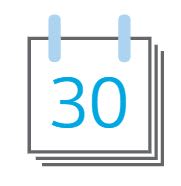WHAT PRIMARY PRODUCERS NEED TO CONSIDER WHEN TAX PLANNING FOR EOFY
 With the end of the financial year looming, it’s time to think about your tax planning options before 30 June 2025 hits.
With the end of the financial year looming, it’s time to think about your tax planning options before 30 June 2025 hits.
We’ve curated a list of top things to focus on when organising your tax affairs for the 2025 year-end, applicable to businesses, primary producers, trusts and individuals.
PRIMARY PRODUCERS
Read our top 6 tax time tips for primary producers:
1. Fencing and storage assets
Primary Producers can immediately deduct capital expenses for fencing and fodder storage assets.
Fodder Storage assets includes assets or structural improvements used primarily and principally for the purpose of storing fodder. Dual purposes assets must primarily store fodder.
Fencing Assets include posts, rails, wire, droppers and gates. A fencing asset includes structural improvements or assets that are a fence, or a repair of a capital nature or an alteration, addition, or extension to a fence.
2. Prepayment products
Primary producers can also access tax deductions by making prepayments through various businesses prepayment products.
This allows prepayment for future farming needs, typically in the following financial year. Customers can also receive a credit as a reward for the extended payment-collection period, credited bank to their supplier account. This reward cannot be redeemed as cash but only as a credit. Prepayment products must receive an ATO product ruling to ensure the full tax deduction in the current tax year.
Please discuss with your RSM advisor that the product ruling is applicable.
3. Expenses for Landcare operations
Primary producers can immediately deduct expenses for Landcare operations aimed at Environmental conservation and sustainable land management.
These include drainage works to combat salinity, erosion control measures and installing fences under approved management plans.
4. Profit from forced disposal of livestock
With many areas around Australia being affected by adverse weather conditions, some farmers have been forced to destock pastures. Flood and drought affected areas may be eligible for tax relief in this situation.
This includes spreading the profit on disposal of livestock over a five-year period or electing to defer the profit to reduce the replacement cost of livestock. Any profit not used in the disposal year or any of the next five years would then form part of assessable income in the fifth income year.
5. Primary production income averaging
Primary production averaging can be used to average the income of primary producers over a 5-year period.
When a primary producer’s average income is less than their taxable income, they are entitled to an averaging tax offset. If their average income is more than their taxable income will be subject to pay complementary tax.
Careful planning and review within a farming group could result in significant tax savings in minimising any complementary tax.
6. Farming management deposits (FMD)
From 1 July 2018, the maximum amount of all deposits that can be held by an individual is $800,000, with a minimum amount remaining at $1,000.
If you are experiencing financial hardship and wish to access your FMD early, please contact our office to discuss what options may be available.
FMDs enable primary producers to delay income to use during tougher periods and to defer the tax liability until the deposit is repaid. Tax deductions are available for FMDs made in the same year if not withdrawn within 12 months.
Farmers earning also more than $100,000 of non- primary production income won't be eligible to claim the deduction for an FMD. Farmers hit by natural disasters like drought can withdraw FMDs within 12 months without losing tax benefits under specific conditions such as proving six- month rainfall deficiency. FMD can now offset farm business debt interest costs.
CONTACT US
Whether you are looking to maximise deductions, manage capital gains, explore superannuation strategies, or leverage any other tax-saving opportunities, our dedicated team is here to guide you every step of the way. We encourage you to explore the contents of this webpage and reach out if you have any further questions.










